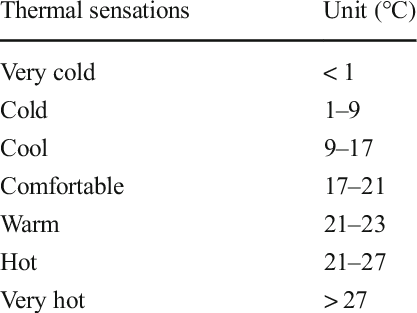The WSI is based on the "NET" (Net Effective Temperature), and it is applicable to both, hot and cold atmospheric conditions. The input parameters to the NET calculation are air temperature, humidity and wind, which are daily observed in the Portuguese meteorological network stations.
The predecessor of NET, the "effective temperature", originally introduced by Missenard in 1937 (Hentschel, 1987), which include the effects of relative humidity, was limited to situations of heat. Modifications by Gregorczuk (WMO, 1972; Hentschel, 1987) included the effect of wind and extended their use to situations of cold. The resulting formula is:

Where “T” is the dry bulb temperature in ºC, “v” is the wind speed in m/s and “RH” is the relative humidity in percentage
NET is consistent with the common human perception:
a) in hot weather NET increases with an increase in temperature and/or humidity and decreases with increasing wind speed.
b) in cold weather, NET decreases with decreasing temperature and with increasing moisture and/or wind speed.
The WSI (Weather Stress Index) is an index (percentile) derived from the NET. For example, if WSI = 99%, it means that only 1% of days in the studied period exceeded that NET, but if WSI = 1% it means that only 1% of days had a NET below that threshold. Extreme values of WSI are related to physiological values of great discomfort and therefore the WSI can be used as a risk index.
The WSI published daily online, by IPMA, is calculated for two different times, based on observations at 06 and 13 UTC.



